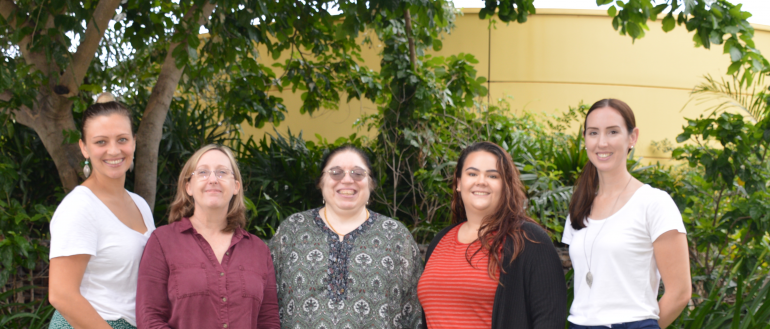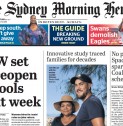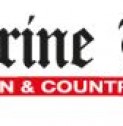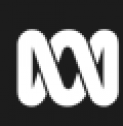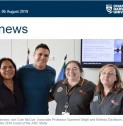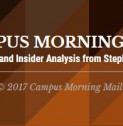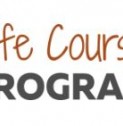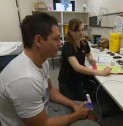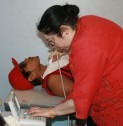The Life Course Program is a prospective, life course study investigating the causes of non-communicable chronic diseases with special emphasis on early causes and preventative interventions.
The Life Course Program encompasses two cohort studies, the Aboriginal Birth Cohort (ABC) study and the Top End Cohort (TEC) study. The ABC study is the longest and largest study of Aboriginal and Torres Strait Islander people in Australia and is now in its 30th year.
Researchers have been following the health and wellbeing of 686 Indigenous and 196 non-Indigenous people from birth through childhood, adolescence and into adulthood with regular, comprehensive health checks conducted at their place of residence. The current follow-up commenced in 2019.
For more information on the ABC and TEC studies check out our website | Life Course website.
As a prospective course study, the main aim is to assess the effect of early life factors, birth, childhood and adolescence, on later physical and mental health and to examine which factors influence these across the life course.
This study seeks to identify those who are most at risk of developing chronic conditions, such as diabetes, heart and kidney disease and mental health problems.
The life course program commenced in 1987 when the late Dr Susan Sayers (AO) founded the ABC study. The main aim of the study was to assess the impact of fetal growth restriction (FGR) within the womb on subsequent growth and development of chronic diseases in adulthood.
The ABC cohort was recruited from the Royal Darwin Hospital between 1987 and 1990 and has been followed up by the research team at three subsequent time periods. In 2007, led by Professor Gurmeet Singh, the TEC study was recruited to add valuable information on non-Indigenous adolescents in the Northern Territory (NT) and has subsequently been followed up by the research team with the ABC study.
Wave-1 (1987-1990 n= 686)
Between 1987 and 1990, Dr Sayers recruited 686 babies born to mothers who identified as Aboriginal at the Royal Darwin Hospital. Maternal, perinatal and neonatal data were collected. The cohort represents more than half (55 percent) of the entire 1238 eligible Aboriginal infants in the NT over this period.
Wave-2 (1998-2001 n= 572)
This follow-up, led by Dr Sayers and including Dr Gurmeet Singh, occurred when participants had a mean age of 11 years. Data collected included body measurements (weight, height, head, mid upper arm, waist circumference and skinfold), respiratory, renal (size and function), metabolic, cardiovascular, haematological and socioeconomic measures.
An overview of this wave of data collection can be viewed here.
Wave-3; recruitment of TEC (2007-2009 n= 196)
The paucity of health information in teenage and young adulthood, directed us to recruit an age and birth place matched cohort of non-Indigenous people who now form the Top End Cohort (TEC). Between November 2007 and September 2009, 196 non-Indigenous people, who were born in the Darwin region and residing here at the time, were recruited. Participants were born in Darwin between 1987 and 1991. We did not include those born to Indigenous mothers, as this was already covered by the ABC.
Wave-4 (2013-2015; ABC= 459, TEC=117)
This follow-up, led by Dr Gurmeet Singh, occurred when participants of the ABC and TEC were 24 years on average. A wide range of health data was collected, including body measurements (weight, height, head, mid upper arm, waist circumference and skinfold), renal (size and function), metabolic, cardiovascular, haematological and socioeconomic measures. Questionnaires were used to assess lifestyle habits including smoking and alcohol use. Specifically designed questionnaires were developed to assess emotional wellbeing and dietary intake. This wave also included sub-studies to check hepatitis B immunity and iodine status which provided iodine levels both pre (Wave-3) and post the national mandatory fortification of iodised salt in bread.
An overview of this wave of data collection can be viewed here.
Wave-5:
The fifth wave of data collection for this unique cohort will commence in 2019 and continue through to 2020. Participants of both the ABC and TEC will be aged between 28-33 years and researchers will again be travelling to over 40 communities, both urban and remote, across the Top End.
If you would like to know when we will be in your community, please send us an email or call/text 0458 543 765.
As in previous follow-ups, participants will undergo a comprehensive health check, including:
- body measurements
- blood pressure
- ultrasounds of kidneys, thyroid and carotid (artery in your neck)
- blood and urine testing
- emotional well-being and thinking ability.
If you are a part of the cohort and would like more information on what you can expect when we see you, please visit our website or email.
Community involvement:
As in previous waves, the research team values the support and guidance offered by members of the Aboriginal communities it visits. We will be looking to employ local community members to assist in the research process. For more information, please email the research team.
-
Innovative study traced families for decades
The Life Course study was started in 1987 by the late pediatrician Dr Susan Sayers from the Menzies School of Health Research in Darwin.
-
CDU to hold 'virtual' graduation ceremony
PhD graduand Belinda Davison will speak as part of the ceremony.
-
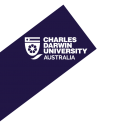
Students to celebrate academic achievements at virtual grad
Dr Belinda Davison is the Life Course Program project manager at Menzies, which aims to examine the effect of early life events on later health and disease.
-
Aboriginal Birth Cohort study reaches 32 years of looking at health in the NT community
It is the longest and largest study of Aboriginal people in Australia, with 686 participants all born between 1987 and 1990 at Royal Darwin Hospital.
-
Menzies runs next phase of Aboriginal health study
Australia’s largest and longest running study of Aboriginal people, the Aboriginal Birth Cohort Study (ABC), has begun its fifth wave of data collection.
-
New stage in Indigenous health study
Campus Morning Mail reports on Menzies School of Health Research commencing collecting data for a fifth wave of its Aboriginal Birth Health Cohort Study.
-
Fifth wave of research to roll out across the Top End
Australia’s largest and longest running study of Aboriginal people, the Aboriginal Birth Cohort Study (ABC), has commenced its fifth wave of data collection.
-

Longest running Aboriginal health study to enter new stage
For thirty years, researchers at the Menzies School of Health research have been tracking the health of babies born to Aboriginal mothers at Royal Darwin Hospital between 1987 and 1990.
-

Cohort Profile: Australian Aboriginal Birth Cohort (ABC) study
International Journal of Epidemiology, 2017, 1 Pocket Profile
-

Rain, hail or shine - Landmark study rolls on
The largest, longest-running and most significant study of the lives of Indigenous babies born in Australia continued its fourth wave of data collection throughout 2014.
-
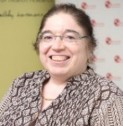
Australia’s 7 Up: the revealing study tracking babies to adults
Dr Gurmeet Singh is the director of the Aboriginal Birth Cohort (ABC), the longest and largest Aboriginal Cohort in Australia.
-
730NT: Tracking down Darwinites' health
It's the nation's largest and longest-running study of Aboriginal people - and it's happening here in the Northern Territory.
-
On the road again: Nation's oldest and largest Aboriginal health study
The oldest and largest study of Aboriginal people in Australia has begun its fourth wave of data collection.
Study director:
- Associate Professor Gurmeet Singh, Menzies School of Health Research
Study founder:
-
Associate Professor Susan Sayers AO (Deceased), Menzies School of Health Research
Researcher team:
- Belinda Davison, project manager
Chief investigators:
-
Professor Wendy Hoy, University of Queensland
-
Professor James McFarlane, Unviversity of New England
-
Professor Markus Juonala, University of Turku, Finland and Murdoch Childrens Research Institute
-
Dr Katja Pahkala, University of Turku, Finland
-
Craig Allen, Charles Darwin University
Associate investigators:
- Professor Anne Chang, Menzies School of Health Research
- Dr Julie Brimblecombe, Menzies School of Health Research
- John Lynch, University of Adelaide
- Murthy Mittinty, University of Adelaide.
Collaborations, past and present:
- Research Centre of Applied and Preventive Cardiovascular Medicine, University of Turku
- Food Standards Australia New Zealand
- Centre for Chronic Disease, School of Medicine, University of Queensland
- National Centre for Immunisation Research and Surveillance, New South Wales
- School of Population, University of Adelaide, South Australia
- Institute of Health and Society, Newcastle University, United Kingdom
- Indigenous Oral Health Unit, Australian Research Centre for Population Oral Health, South Australia
- Australian Centre for Control of Iodine Deficiency Diseases, New South Wales.
Wave 1:
- Sayers, S.M., & Powers, J.R. (1992). An evaluation of three methods used to assess the gestational age of Aboriginal neonates. Journal of Paediatrics and Child Health, 28(4), 312-317.
- Sayers, S.M., & Powers, J.R. (1993). Birth size of Australian Aboriginal babies. Medical Journal of Australia, 159(9), 586-591.
- Sayers, S., & Powers, J. (1997). Risk factors for Aboriginal low birthweight, intrauterine growth retardation and preterm birth in the Darwin Health Region. Australian and New Zealand Journal of Public Health, 21(5), 524-530.
- Allan, R.A., Sayers, S., Powers, J., & Singh, G. (2009). The development and evaluation of a simple method of gestational age estimation. Journal of Paediatrics and Child Health, 45(1-2), 15-19.
Wave 2:
- Sayers, S.M., Mackerras, D., Singh, G., Bucens, I., Flynn, K., & Reid, A. (2003). An Australian Aboriginal birth cohort: a unique resource for a life course study of an Indigenous population. A study protocol. BMC International Health and Human Rights, 3(1), 1.
- Mackerras, D.E., Reid, A., Sayers, S.M., Singh, G.R., Bucens, I.K., & Flynn, K.A. (2003). Growth and morbidity in children in the Aboriginal Birth Cohort Study: the urban-remote differential. Medical Journal of Australia, 178(2), 56-60.
- Sayers, S.M., Mackerras, D., Singh, G., & Reid, A. (2004). In an Aboriginal birth cohort, only child size and not birth size, predicts insulin and glucose concentrations in childhood. Diabetes Research and Clinical Practice, 65(2), 151-157.
- Bucens, I.K., Reid, A., & Sayers, S.M. (2006). Risk factors for reduced lung function in Australian Aboriginal children. Journal of Paediatrics and Child Health, 42(7-8), 452-457.
- Sayers, S., Mackerras, D., Halpin, S., & Singh, G. (2007). Growth outcomes for Australian Aboriginal children aged 11 years who were born with intrauterine growth retardation at term gestation. Paediatric and Perinatal Epidemiology, 21(5), 411-417.
- Sellers, A.C., Singh, G.R., & Sayers, S.M. (2008). Large waist but low BMI: the metabolic syndrome in Australian Aboriginal children. Journal of Pediatrics, 156(2), 222-227.
- Cunningham, T.E., Sayers, S.M., & Singh, G.R. (2009). Lipoprotein(a) identifies cardiovascular risk in childhood: the Australian Aboriginal Birth Cohort Study. Journal of Paediatrics and Child Health, 47(5), 257-61.
- Sayers, S., Singh, G., Mott, S., McDonnell, J., & Hoy, W. (2009). Relationships of birth weight and biomarkers of chronic disease in childhood: Aboriginal Birth Cohort Study 1987–2001. Pediatric and Perinatal Epidemiology, 23(6), 548-556.
- Sellars, E.A.C., Singh, G., & Sayers, S. (2009). ApoB/A1 identifies cardiovascular risk in childhood: the Australian Aboriginal Birth Cohort Study 1987-2001. Diabetes and Vascular Disease Research, 6(2), 94-99.
Wave 3:
- Sayers, S., Singh, G., Mackerras, D., Gunthorpe, W., Jamieson, L., Davison, B., et al. (2009). Australian Aboriginal Birth Cohort Study: follow-up processes at 20 years. BMC International Health and Human Rights 2009; 9(23).
- Singh, G.R., Sayers, S.M., & Mackerras, D.E.M. (2009). The Australian Aboriginal Birth Cohort: The life course and much more. Australasian Epidemiologist, 16(3), 14-16.
- Jamieson, L.M., Sayers, S.M., & Roberts-Thomson, K.F. (2010). Clinical oral health outcomes in young Australian Aboriginal adults compared with national-level counterparts. Medical Journal of Australia, 192(10), 558-561.
- Thomas, A., Cairney, S., Gunthorpe, W., Paradies, Y., & Sayers, S. (2010). Strong Souls: development and validation of a culturally appropriate tool for assessment of social and emotional well-being in Indigenous youth. Australian and New Zealand Journal of Psychiatry, 44(1), 40-8.
- Lewis, M.S., Dingwall, K.M., Berkhout, N., Sayers, S., Maruff, P., & Cairney, S. (2010). Assessment of cognition in an adolescent Indigenous population. Australian Psychologist, 45(2), 123-131.
- Jamieson, L.M., Roberts-Thomson, K., & Sayers, S. (2010). Dental caries risk indicators among Australian Aboriginal young adults. Community Dentistry and Oral Epidemiology, 38(3), 213-221.
- Mackerras, D.E., Singh, G.R., & Eastman, C.J. (2011). Iodine status of Aboriginal teenagers in the Darwin region before mandatory iodine fortification of bread. Medical Journal of Australia, 194(3), 126-30.
- Sayers, S., Mott, S., & Singh, G.R. (2011). Fetal growth restriction and 18-year growth and nutritional status: Aboriginal Birth Cohort 1987–2007. American Journal of Human Biology, 23(3), 417-419.
- Priest, N.C., Paradies, Y.C., Gunthorpe, W., Cairney, S.J., & Sayers, S.M. (2011). Racism as a determinant of social and emotional wellbeing for Aboriginal Australian youth. Medical Journal of Australia, 194(10), 546-550.
- Jamieson, L., Kapellas, K., Roberts-Thomson, K., & Sayers, S. (2011). Validity of dental screening questions in an Indigenous young adult population. Australian and New Zealand Journal of Public Health, 35(1), 87-88.
- Pearce, M.S., Mann, K.D., Singh, G., Davison, B. & Sayers, S.M. (2014). Prevalence and validity of self-reported smoking in Indigenous and non-Indigenous young adults in the Australian Northern Territory. BMC Public Health, 14(1): 86.
- Lawrance, M., Sayers, S.M. & Singh, G.R. (2014). Challenges and strategies for cohort retention and data collection in an indigenous population: Australian Aboriginal Birth Cohort. BMC Medical Research Methodology, 14(1): 31.
- Juonala, M., Singh, G.R., Davison, B., van Schilfgaarde, K., Skilton, M.R., Sabin, M.A., Cheung, M., Sayers, S. & Burgner, D.P. (2016). Childhood metabolic syndrome, inflammation and carotid intima-media thickness. The Aboriginal Birth Cohort Study. International Journal of Cardiology, 203: 32-36.
- Singh, G. (2017). A tribute to Associate Professor Susan Sayers (15 August 1943–22 March 2016). Journal of Developmental Origins of Health and Disease, 8(5): 512.
- Sayers, S.M., Mackerras, D. & Singh, G.R. (2017). Cohort profile: the Australian Aboriginal Birth Cohort (ABC) study. International Journal of Epidemiology, 46(5):1383-1383f.
- Gialamas, A., Kinnell, A., Mittinty, M.N., Davison, B., Singh, G. & Lynch, J. (2018). Association of anthropometric measures and cardiovascular risk factors in children and adolescents: Findings from the Aboriginal Birth Cohort study. PLOS One, 13(6):e0199280.
Wave-4:
- Davison, B., Nagel, T. & Singh, G. (2017). Life, lifestyle and location: examining the complexities of psychological distress in young adult Indigenous and non-Indigenous Australians. Journal of Developmental Origins of Health and Disease, 8(5):541-549.
- Vino, T., Singh, G.R., Davison, B., Campbell, P.T., Lydeamore, M.J., Robinson, A., McVernon, J., Tong, S.Y.C. & Geard, N. (2017). Indigenous Australian household structure: a simple data collection tool and implications for close contact transmission of communicable diseases. PeerJ, 5: e3958.
- Cheah, B.C., Davies, J., Singh, G.R., Wood, N., Jackson, K., Littlejohn, M., Davison, B., MIntyre, P., Locarnini, S., Davis, J.S. & Tong, S.Y.C. (2018). Sub-optimal protection against past hepatitis B virus infection where subtype mismatch exists between vaccine and circulating viral genotype in northern Australia. Vaccine, 36(24): 3533-3540.
- Davison, B., Singh, G.R. & McFarlane, J. (2018). Hair cortisol and cortisone as markers of stress in Indigenous and non-Indigenous young adults. Stress, 1-11.
- Sjöholm, P., Pahkala, K., Davison, B., Juonala, M. & Singh, G.R. (2018). Early life determinants of cardiovascular health in adulthood. The Australian Aboriginal Birth Cohort study. International Journal of Cardiology, 269: 304-309.
- Singh, G., Davison, B., Ma, G., Eastman, C.J. & Mackerras, D. (2019). Iodine status of young indigenous and non-indigenous adults in the Northern Territory after mandatory fortification of bread with iodised salt; a comparison with pre-fortification status. Medical Journal of Australia, 210(3): 121-125.
- Davison, B., Goodall, J., Whalan, S., Montgomery‐Quin, K., Howarth, T. & Singh, G. Nutritional dual burden in Indigenous young adults: The geographical differential. Australian Journal of Rural Health, 27(1): 14-21.
- Davison, B., Singh, G.R., Oguoma, V.M. & McFarlane, J. (2019). Fingernail cortisol as a marker of chronic stress exposure in Indigenous and non-Indigenous young adults. Stress, 6: 1-10.
- Howarth, T., Davison, B. & Singh, G. (2019). Grip strength among Indigenous and non-Indigenous Australian adults: a longitudinal study of the effects of birth size and current size. BMJ Open, 9(4): e02474.
- Juonala, M., Sjöholm, P., Pahkala, K., Ellul, S., Kartiosuo, N., Davison, B. & Singh, G.R. (2019). The Australian Aboriginal Birth Cohort study: socio‐economic status at birth and cardiovascular risk factors to 25 years of age. Medical Journal of Australia, 211(6): 265-270.
- Sevoyan, A., Davison, B., Rumbold, A., Moore, V. & Singh, G. (2019). Examining the relationship between body mass index and adverse cardio-metabolic profiles among Australian Indigenous and non-Indigenous young adults. Scientific Reports, 9(1): 3385.
Related publications:
- Singh, G. R. (2009). Glomerulonephritis and managing the risks of chronic renal Disease. Pediatric Clinics of North America, 56(6), 1363-1382.
- Sayers, S., & Lancaster, P.A.L. (2008). Fetal growth retardation: causes and outcomes. International Encyclopedia of Public Health, 2, 613-622.
- Sayers, S.M. (2009). Indigenous newborn care. Pediatric Clinics of North America, 56(6), 1243-61.
- Sayers, S., & Boyle, J. (2010). Indigenous perinatal and neonatal outcomes: a time for preventive strategies. Journal of Paediatrics and Child Health, 46(9), 475-478.
- Mackerras, D. E., Singh, G.R., & Sayers, S. (2010). The Aboriginal Birth Cohort Study: When is a cohort study not a cohort design? Nutrition and Dietetics, 67(3), 171-176.
- Mackerras, D., & Singh, G. (2007). The prevalence of anaemia depends on the definition: an example from the Aboriginal Birth Cohort Study. European Journal of Clinical Nutrition, 61(1), 135-139.
Indigenous literature:
- Fitz, J. (2011). Challenges for an Indigenous researcher working with young people in Alice Springs. Aboriginal and Islander Health Worker Journal, 35(6), 12-13.
- Sayers, S., Davison, B., Fitz, J., & Singh, G. (2011). Aboriginal Birth Cohort Study-Wave 3: Selected results: The good news and the bad news. Aboriginal and Islander Health Worker Journal, 35(5), 23-24.
- Sayers, S., Fitz, J., Singh, G., Shultz, K., Davison, B., & Jamieson, L. (2008). Update on the Aboriginal Birth Cohort Study: Wave 3 Methods at 20 Years. Aboriginal and Islander Health Worker Journal, 32(4), 18-20.
- Sayers, S., Mackerras, D., & Singh, G. (2004). Update on the Aboriginal Birth Cohort Study. Aboriginal and Islander Health Worker Journal, 28(2), 6-8.
- Bailey, A. (1993). From Health Worker to Health Worker ... across Australia: An Aboriginal Infant Study. Aboriginal and Islander Health Worker Journal, 17(3), 5-6.
For more information on the study and/or the current wave of data collection, please contact Belinda Davison, Project Manager via:
- Phone: (08) 8946 8544

